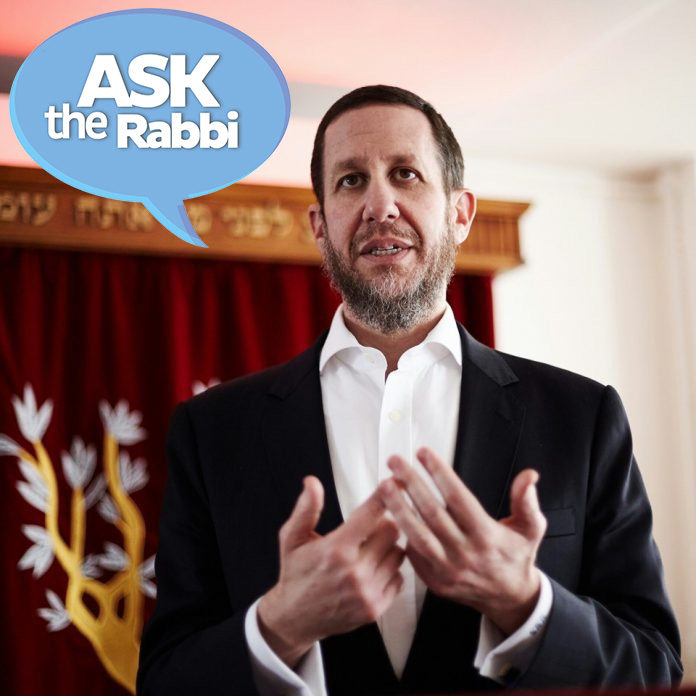
Why Shabbat Candles?
Dear Rabbi,
I was attending a pre-Shabbat UK talk last week. I was amazed how many women don’t light the Shabbat candles. And of those who do, how many of them don’t understand the significance of it. Can you kindly elaborate?
Isabella
Dear Isabella,
The commandment of lighting Shabbat candles is alluded to within the very Ten Commandments. The Ten Commandments are repeated twice in the Torah. The first time the Torah tells us to “remember (zachor) Shabbat.” This teaches us the importance of ritual to demonstrate our observance of Shabbat e.g. Kiddush, candles, etc. Later the Torah tells us to “safeguard (shamor) the Shabbat.” This serves as a warning not to violate the sanctity of the Shabbat. But which word did G-d say – “remember” or “safeguard”?
Our sages tell us that at the time the Torah was given, Gd uttered both words shamor and zachor simultaneously, to teach us that both are equal parts of the Shabbat commandment. To commemorate this, the sages instructed us to kindle lights. The minimum mitzvah, as they instituted, is to kindle one light. Nevertheless, the universally accepted custom is to kindle two lights, thus hinting at both dimensions of “remembering” and “safeguarding.”
The commentary Ohr Hachaim Hakodosh (early eighteenth century commentator and mystic) explains why the first mitzvah of Shabbat is the kindling of lights. Why don’t we make Kiddush first? The answer lies in words which we recite in the Kiddush “for on six days G-d made heaven and earth and all upon it and on the seventh day He rested.” We reflect not just on the fact that G-d rested but that He created throughout the six days. In other words, in essence Shabbat is more than just a day of rest. It is actually a celebration of the Creator and His Creation. G-d’s creation of the world follows a seven-day cycle, which peaks each Shabbat and begins anew. At Creation, the first thing that was brought into being was light. Therefore, it is appropriate to kindle lights at the start of Shabbat in commemoration of the first light that was created.
The Talmud relays cryptically that the light created on the first day enabled a person to see from one end of the world to the other. Then, when G-d saw that corrupt generations would arise, He took this light, hid it away, and saved it for the righteous people to come.
While most of us cannot see this light, the spiritual glow that comes into the home upon kindling Shabbat lights is certainly available to us all. It’s considered in Kaballah as an extension of that all original light. As my daughter observed one Friday night when we were all seated around the table eating the freshly baked challah, “Mummy, why is the light in the house different on Shabbat?” It just is.
On January 1, 2000, the New York Times ran a Millennium Edition. It was a special issue that featured three front pages. One had the news from January 1, 1900. The second was the actual news of the day, January 1, 2000. And then they had a third front page—projecting envisioned future events of January 1, 2100. This fictional page included things like a welcome to the fifty-first state: Cuba; a discussion as to
whether robots should be allowed to vote; and so on. And in addition to the fascinating articles, there was one more thing. Down on the bottom of the Year 2100 front page was the candle-lighting time in New York for January 1, 2100. Reportedly, the production manager of the New York Times – an Irish Catholic – was asked about it. His answer was right on the mark. It speaks to the eternity of our people, and to the power of Jewish ritual. He said, “We don’t know what will happen in the year 2100. It is impossible to predict the future. But of one thing you can be certain – that in the year 2100 Jewish women will be lighting Shabbat candles.”
That’s the meaning of more than Jews have kept Shabbat, Shabbat has kept the Jews. It’s what links our past to our present and our present to our future.
Are You In Love with Shabbat?
Dear Rabbi,
I understand that we look to say farewell to the Shabbat at its conclusion, in our prayers. But why must we repeat a process of wine and light again?
Geraldine
Dear Geraldine,
How do you know if you love a person? Imagine you love someone very much. You’re standing on a street, saying goodbye to each other. You walk to the corner and then you realise you can’t walk away from her. She also has walked to the corner but realises she can’t walk away either. You turn around; so does she. You are both standing at the corner facing each other. Suddenly you run back to each other. This means you’re in love. If you cannot separate, you’re in love. You’re on the phone with that special someone, you’ve said your goodbyes, but you can’t hang up, you keep schmoozing – you’re in love.
Shabbat ends. It’s over. What do Jews do? We start pulling out wine, and lighting fire, and spices, we begin making Kiddush all over again. We can’t separate. We’re in love with Shabbat. We start the day with candles and wine and we finish the day with candles and wine.
You’ve just been renewed and spiritually charged by Shabbat. Now take this elevated spirit into the week. Take the sweet taste of wine into the week; take the rays of the Shabbat luminescence and let it shine through and upon the rest of the week.
By Rabbi YY Schochet









